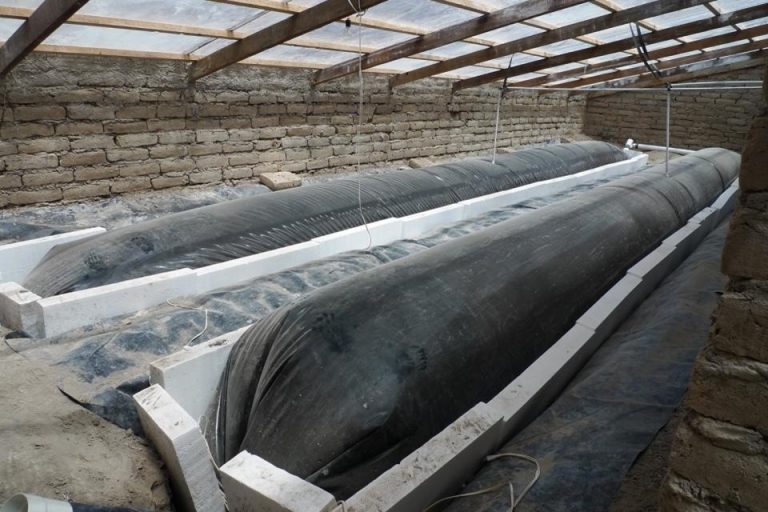Click here to view the full report
In Alaska, over 3,000 households currently use unpiped sanitation systems to collect human waste and nearly 80% of rural households rely on diesel to meet their energy needs. A consistent concern and priority that is expressed to the U.S. Environmental Protection Agency (EPA) from Alaska Native Villages is the need for basic sanitation and treatment options for raw sewage. The EPA is interested in exploring the multi-benefit use and feasibility of anaerobic digestion (AD) for both sanitation and energy improvements for off-grid Alaskan communities. AD is a proven and effective biological treatment process that relies on microorganisms to break down organic matter (OM), effectively reducing pathogens and producing biogas as a byproduct and potential energy source.
This research report summarizes findings from a landscape analysis of AD with a focus on identifying 1) where AD has been used in cold weather or high elevation locations; 2) challenges associated with implementing AD systems; and 3) opportunities for funding and implementing cold weather AD design in Alaskan communities. The landscape analysis involved conducting a literature review, interviewing experts in the field, and reviewing current technologies to identify challenges, gaps, and opportunities for implementing anaerobic digesters in rural Alaskan communities. After data cleaning, 32 out of the 50 experiments reported successfully testing out AD in 20°C or colder operating temperatures. The most significant barriers to implementing AD systems include freezing temperatures, having trained operators and consistent monitoring, affordability, and access.
Overall, the initial analysis indicates that AD systems can operate at low temperatures, effectively achieve pathogen reduction, and generate biogas (although limited). Yet, there are persistent gaps in the implementation of field-scale cold weather AD systems, especially in the Arctic and sub-Arctic regions. Key recommendations include:
- Conducting field-scale testing of digesters to account for various design and operational strategies.
- Implementing centralized systems for easier operation and maintenance.
- Incorporating external heating, with an emphasis on both passive and active methods.
- Investigating improved and reliable collection and conveyance strategies.
- Involving and integrating community priorities, values, and feedback throughout the design and implementation processes.
If implemented and operated properly, AD has the potential to improve both human and environmental health with numerous social and economic benefits.
Figure: A tubular digester implemented in Laguna Colorada, Peru. Image from Dr. Jaime Martí-Herrero.
Click here to view the full report
E4C 2021 PROGRAM MANAGEMENT TEAM: Mariela Machado, Senior Program Manager; Grace Burleson, Research Manager; Marilynn Holguín Clover, Program Coordinator; Jonathan Kemp, Program Associate
ADVISORS AND COLLABORATORS: Margaret McCauley, Environmental Engineer, U.S. EPA, USA; Embrey Bronstad, Environmental Engineer, WSU, USA
This research was completed as part of the 2021 E4C Fellowship program. Learn more about the Fellows who worked on this research collaboration by connecting with them on LinkedIn: Jessica Egan and Erin Peiffer.


No Comments.